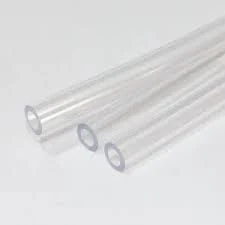Oct . 02, 2024 09:49 Back to list
Understanding the Benefits and Applications of PPR Hot Water Pipes in Plumbing Systems
The Importance of PPR Hot Water Pipes in Modern Plumbing
In the realm of modern plumbing solutions, PPR (Polypropylene Random Copolymer) hot water pipes have emerged as a significant innovation. Engineered to withstand high temperatures and pressures, PPR pipes are increasingly being favored for both residential and commercial plumbing systems. This article aims to explore the numerous advantages of using PPR hot water pipes, their applications, installation procedures, and why they stand out compared to traditional piping materials.
Advantages of PPR Hot Water Pipes
One of the most prominent benefits of PPR hot water pipes is their exceptional thermal resistance. PPR pipes can handle temperatures up to 95°C (203°F). This characteristic makes them ideal for hot water systems, including heating installations, hot water supply lines, and underfloor heating applications. Unlike conventional materials, such as PVC or metal pipes, PPR pipes do not suffer from thermal expansion as severely, ensuring a stable and reliable hot water system.
Durability also plays a vital role in the superiority of PPR pipes. They are corrosion-resistant and have a long service life that can extend beyond 50 years with proper installation and maintenance. This resilience means fewer repairs and replacements over time, offering both cost savings and peace of mind to homeowners and facility managers alike. PPR pipes are also resistant to chemical degradation, making them suitable for a variety of water sources without fear of leaching harmful substances.
Moreover, PPR hot water pipes offer excellent flow characteristics. Their smooth inner surface minimizes friction losses, allowing for a high flow rate and improved energy efficiency in water transportation. This feature is especially advantageous in multi-story buildings where maintaining consistent water pressure is crucial.
Applications of PPR Hot Water Pipes
The versatility of PPR hot water pipes makes them suitable for a wide range of applications. In residential settings, they are commonly used for hot water supply lines, heating systems, and even in swimming pool heating systems. For commercial establishments, PPR pipes are utilized in industrial water supply lines, food and beverage processing, and in the cooling and heating systems of large facilities.
ppr hot water pipe

In regions with extreme weather conditions, especially cold climates, PPR pipes provide a reliable solution. Their resistance to freezing means they are less likely to burst compared to other materials, ensuring uninterrupted hot water supply even during harsh winters.
Installation of PPR Hot Water Pipes
Installing PPR hot water pipes is a straightforward process but requires the right tools and expertise to ensure a reliable system. The most common method for PPR pipe installation is hot fusion welding. This technique involves heating both the pipe and fitting ends to a specific temperature before joining them together. The result is a seamless connection that maintains the integrity of the pipe.
Proper planning and adherence to local regulations and standards are vital during installation. Using the correct size and type of PPR pipe for the intended application will minimize issues such as leaks or pressure loss down the line.
Conclusion
In summary, PPR hot water pipes represent a significant advancement in plumbing technology, offering durability, thermal resistance, energy efficiency, and an extended lifespan compared to traditional piping materials. Their versatility allows them to be used in a myriad of applications, making them an ideal choice for both residential and commercial plumbing systems.
As building codes and consumer preferences continue to evolve toward more sustainable and efficient solutions, PPR hot water pipes are well-positioned to meet modern demands. Whether you’re considering a renovation, building a new home, or managing a commercial property, integrating PPR pipes can lead to better performance and lower long-term costs, thus benefiting both the environment and your wallet.
-
Durable PP Rigid Sheet: Lightweight, Chemical Resistant Solutions
NewsAug.21,2025
-
PVC Grey Sheet for Extraction: Chemical Resistant & Durable
NewsAug.19,2025
-
Durable PVC Pipe Fittings for Plumbing & Irrigation Needs
NewsAug.18,2025
-
HDPE Steel Belt Reinforced Spiral Corrugated Pipe | High Strength
NewsAug.17,2025
-
HDPE Pipe Fittings: Durable, Leak-Proof Solutions
NewsAug.16,2025
-
Premium CPVC Sheet: High-Temp & Chemical Resistant Solutions
NewsAug.15,2025

